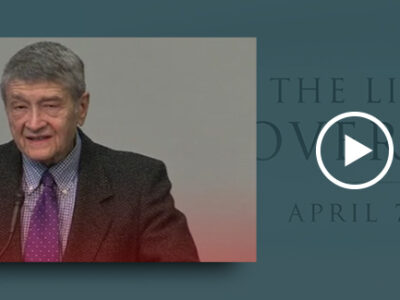Nicholas Kristof, columnist for the New York Times recently wrote an article called “Lovers Under the Skin” (12/3/03) in which he sought to provide support for the idea that homosexuality, at least in men, is passed down to later generations through supposedly related behavioral traits such as sensitivity and empathy. He asked two questions in his article that he suggested must be answered by those who disagree with genetic determinism. I like a challenge so en garde!
First the question and then my response.
1. Kristof asks, “If homosexuality is partly genetic, why are there so many gays’”
Another way of stating the question is: Why does homosexual behavior persist if the practice is genetic? This is a remarkable question because it really argues for the importance of environmental influences. Why indeed do people continue to experience same sex attraction unless there are some environmental causes’ Kristof described this theory: perhaps there are some unknown number of genetically determined traits that collectively would lead to homosexuality. However, the more common scenario is that a man may only inherit some of these traits and become a sensitive, empathic heterosexual thus leading to competitive advantages in mate selection over brutish, insensitive males. So the “gay” traits as a group persist because they support heterosexual mating.
Other than addressing the Will and Grace phenomenon, the theory offers us little help. The theory that sensitivity and empathy are traits associated with same sex attraction is quite bound to modern Western culture. In ancient times, married men commonly secured young boys as sexual objects. There is no indication that only sensitive and empathic men engaged in this practice. In certain hunter cultures, almost all young boys engage in homosexual behavior until the time comes for heterosexual pairing. The rate of homosexual behavior after this social rite of passage fades is almost nil. Cultures vary considerably in the frequency and expression of homosexuality, so how does this genetic theory of inheritance account for these cultural and historical differences’
The truth is, it cannot. Such traits as sensitivity and empathy are not ordinarily a part of the cultural expectation for men in Western society. Men who experience themselves as different from other men because they have these traits may be more likely to question their sexuality than those men who fit the cultural stereotype. As developmental theorist Darrell Bem notes, the culturally masculine boy then may seem like the opposite sex to the culturally atypical boy thus fostering a perception of difference or exoticness. In Bem’s words, then, the “exotic becomes erotic” along about early adolescence when, especially for boys, the differences between the culturally masculine boys and the culturally atypical boys are clear, often painfully so to the sensitive youth. While this is theory, there are actually data and evidence that are consistent with the theory, in sharp contrast to the culturally bound theory of multiple gay traits.
2. Kristof asks, “If homosexuality is utterly contrary to God’s law, why is it so embedded in human biology and in the rest of the animal kingdom? (Serious journal articles have described supposedly lesbian seagulls.)”
There are two answers to this question: one scientific and the other religious.
First, there is another explanation for the occurrence of homosexual behavior in animals besides a genetic cause: Environment. For instance in the question above, Kristof notes: “Serious journal articles have described supposedly lesbian seagulls.” However, simply observing that some sea gulls seem to engage in same sex behavior does not mean of necessity that the reason for such behaviors is genetic. In fact, a quote from one of these studies by Johan Van Rhijn and Ton Groothuis implies that the reason for the same sex pairing is environmental. They wrote, “Female-female pairing among some wild larids (gulls) has been interpreted as a continuation of early bonds between nest companions.” (from the abstract). It looks as though these researchers attribute their findings to the environment in the nest.
Moreover, other species show a very clear environmental influence on sexual preference. For instance, a 2000 study published in the journal Animal Behavior by Elizabeth Atkins-Regan and Alan Krakauer found that removing adult males from the rearing environment of young male zebra finches increases the probability that the young males will attempt to mate homosexually. The authors conclude, “early social experience may contribute to a critical component of mate choice.” The impact of environment is clear.
Now the religious rebuttal. The Bible nowhere deals with the sexual life of sea gulls, zebra finches or rats. On a purely moral basis, the behavior of animals is of little or no consequence to how humans choose to live their lives. So even if homosexual behavior was imbedded in the animal kingdom (and exclusive homosexuality does not appear to be so embedded), it wouldn’t have any relevance to religious teachings about human sexuality.
Mr. Kristof seems to need homosexuality to be genetically determined to support his view of gay marriage. But if science offers no support to gay marriage, is it time to retreat Mr. Kristof?




